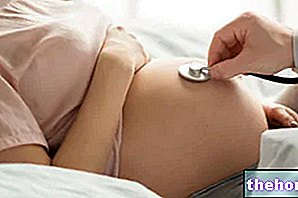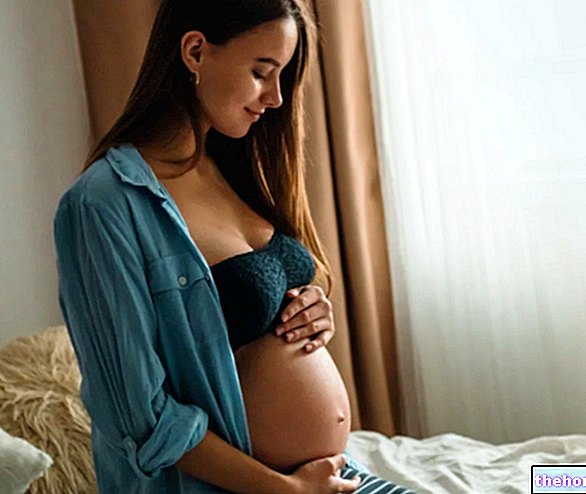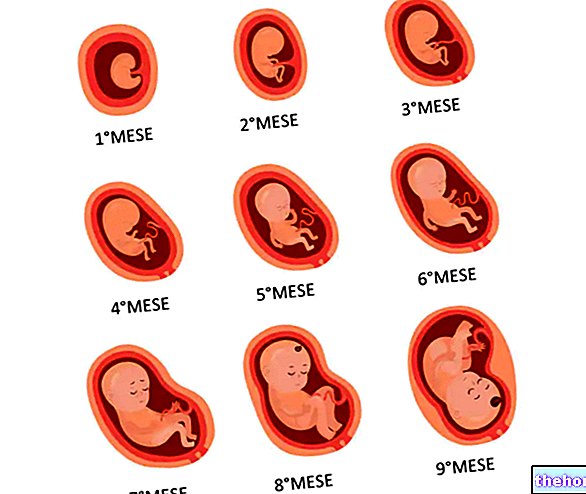The duo test (or bi-test) is a recently acquired biochemical screening test, based on the taking of a small sample of maternal blood in which two substances of placental origin are measured, respectively called β-HCG (free beta fraction chorionic gonadotropin) and PAPP-A (plasma protein A associated with pregnancy).

Clinical significance
In cases of trisomy 21 (another name for Down syndrome), during the first trimester the serum concentration of the β-hCG fraction is higher than in pregnancies with a euploid fetus (not affected by Down syndrome), while PAPP-A is below the norm. Therefore, as PAPP-A decreases and β-HCG increases, the risk that the fetus is affected by the aforementioned chromosomal diseases increases.
Duo-test as a screening method
The duo test is not intended for diagnostic purposes but for "simple" screening; in fact, it allows to identify pregnant women with a "high" risk of carrying a fetus affected by Down syndrome or other chromosomal anomalies, such as trisomy 18.
The high adjective has been placed in quotation marks, because in most cases the probability that the fetus is sick are very low, but still deserving of further diagnostic investigations.
The word "screening" means "to choose carefully". In fact, the duo test represents a sort of filter, to be used in the obstetric population to identify pregnancies at risk of trisomy 21 (another name for down syndrome). The purpose of the duo test is therefore not to diagnose the disease, but to identify the pregnancies at greatest risk in order to carry out further investigations for diagnostic purposes.
Duo Test Alto - What To Do
Faced with a risk profile worthy of further study, the only way to exclude or confirm the suspicion of a chromosomal abnormality is to undergo invasive tests, such as CVS or amniocentesis.
At this point it is legitimate to ask why pregnant women are not directly subjected to these tests, avoiding the various preliminary screening analyzes, such as the duo test. The answer is related to the inherent risk of miscarriage that accompanies these invasive procedures; in fact, the chances of losing the fetus following the aforementioned diagnostic maneuvers are limited, but certainly not negligible (0.5-1%). On the contrary, the duo test and the other screening tests, not being invasive, do not involve risks for the mother or the fetus.

Below, we report a simple calculation module to quantify the theoretical risk of giving birth to a child with Down syndrome, in relation to maternal age.
Age of the mother
Bibliography: Estimating a woman "s risk of having a pregnancy associated with Down" s syndrome using her age - Cuckle, H., Wald, N & Thompson, S..
While it is true that women over the age of 35 are those exposed to the greatest risk of having children with Down syndrome, it is equally true that most (about 70%) of children with trisomy 21 are born to "younger" women. , therefore considered low risk.
This "apparent contradiction is based on" statistical evidence that most pregnancies involve women under the age of 35; consequently, by having many more children, in absolute terms the younger sections of the population give birth to a greater number of children affected by mongolism and other chromosomal anomalies. How, then, to identify risky pregnancies among young women before birth? Discarded a priori - due to the aforementioned risk of abortion and the high health costs - the hypothesis of extending CVS and amniocentesis to the entire obstetric population, the doctors gave birth to the first screening tests. test, which quantifies the risk of trisomy 21 or 18 on the basis of serum concentrations of β-HCG and PAPP-A, but also of other factors, such as subjective variability by gestational age, maternal age, body weight, smoking habit, tendency to threat of miscarriage and previous children with chromosomal abnormalities.
Normal and Altered Values
All these elements are processed by a special software, created by the Fetal Medicine Foundation (London), which expresses the results of the duo test in statistical percentage terms (for example 1 possible pathological case out of 1000 or one possible pathological case out of 50). If the number is between 1/1 and 1/350 the probability that the child is affected by Trisomy 21 is considered high. Although the last extreme (one probability out of 350) shows a limited risk, it is still considered worthy of further study.
In the face of a high risk profile, therefore, it is good to avoid excessive anxieties and worries, because in most cases a risk considered high is still modest in statistical terms, so the great majority of women undergoing amniocentesis and CVS will discover that to carry a perfectly healthy fetus in the womb.
Duo test: how reliable is it?
Since this is a screening test, when interpreting the duo test report, it is necessary to consider that:
- a high risk of disease does not necessarily imply that the fetus has a chromosomal abnormality; rather, it means that the risk is high enough to warrant a clarifying invasive examination (CVS or amniocentesis).
- unfortunately, if the risk of disease is reduced it does not mean that it is nil.
Furthermore, it must be considered that the duo test is far from being a perfect screening test. Its execution, in fact, allows to identify only eighty percent of fetuses affected by Down syndrome. It therefore means that among all pregnancies complicated by trisomy twenty-one, only 80% are considered at risk, therefore sent to amniocentesis or CVS. On the contrary, these invasive investigations are able to recognize the presence of anomalies practically in all (> 99%) of the fetuses examined.
Since the only way to know with certainty whether the fetus is affected or not by a "chromosomal abnormality," consists in "performing" an invasive investigation such as chorionic villus sampling or "amniocentesis," the duo test is not suitable for couples who want to have a certain result; in this case it is better to undergo amniocentesis or CVS directly, assuming the risk of miscarriage of 0.5-1%. Furthermore, the duo test is generally not indicated in women over the age of 35, for whom the identity card is already sufficient to classify them as "high risk", thus making them deserving of invasive tests.
The ability of the duo-test to identify pregnancies at risk of Down syndrome can be further increased (up to 90%) by associating it with an ultrasound examination called nuchal translucency; in this case we speak of a combined test. A further increase in sensitivity (up to 95%) is obtained by combining the duo-test, nuchal translucency and quad-test. Duo test and nuchal translucency are performed between the 11th and 14th week of pregnancy, while the quad-test is performed later, between the 15th and 20th week of gestation.





-cos-come-si-calcola-a-cosa-serve.jpg)



.jpg)


















